Patient acceptance of outpatient parenteral antibiotic therapy

Outpatient parenteral antibiotic therapy (OPAT) can facilitate early discharge; however, not all offered OPAT can accept. We assessed factors associated with acceptance of OPAT in a large Asian tertiary hospital cohort” Wee et al (2018). Abstract: Outpatient parenteral antibiotic therapy (OPAT) can facilitate early discharge; however, not all offered OPAT can accept. We assessed factors […]
Quality of outpatient parenteral antimicrobial therapy

The aim of this qualitative study is to explore the patients’ perspective on high-quality care, and to explore what patient-centred care means to adult OPAT patients” Berrevoets et al (2018). Abstract: OBJECTIVES: Current outpatient parenteral antimicrobial therapy (OPAT) guidelines recommend delivering patient-centred care. However, little is known about what patients define as good quality of […]
Evaluation of domiciliary iloprost through elastomeric pump
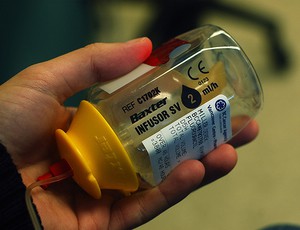
We describe our protocol and report our experience with 12 patients, for a total of 25 infusions, who have received domiciliary iloprost through elastomeric pump” Duarte et al (2018). Abstract: Raynaud’s phenomenon (RP) and digital ulcers (DU) are the main clinical features of vasculopathy that occurs in several systemic rheumatic diseases. Intravenous iloprost is recommended […]
Clinical presentation and therapeutic management of venous thrombosis in young children

Young children with VTE most commonly have CVC-VTE and approximately one-tenth and one-fourth received no or only short durations of anticoagulant therapy, respectively” Chan et al (2018). Abstract: BACKGROUND: Venous thromboembolism (VTE) in young children is not well documented. METHODS: Clinicians from 12 institutions retrospectively evaluated the presentation, therapeutic management, and outcome of VTE in […]
Introduction of antiseptic octenidine-based bathing in the ICU

The implementation of universal octenidine-based bathing combined with a standardised washing regime led to a significant reduction of nosocomial VRE” Messler et al (2018). Abstract: Background: Vancomycin-resistant Enterococcus faecium (VRE) is emerging in German intensive care units (ICUs). On a 32 bed surgical ICU at a university hospital increasing numbers of nosocomial cases occurred despite […]
Persistent left superior vena cava with absent right superior vena cava

We present two cases of PLSVC with an absent RSVC, describe how to recognize and confirm this diagnosis, and discuss its clinical relevance” Patel and Gupta (2018). Abstract: Persistent left superior vena cava (PLSVC) is the most common congenital abnormality of the thoracic systemic venous drainage; in fact, cardiology fellows in training are often quizzed […]
Implications of head turning on central venous access
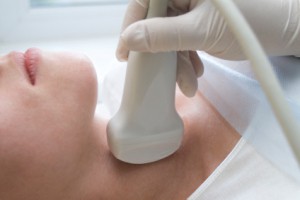
The goal of this study was to examine the anatomical relationships of the IJV and CA as a function of the degree of head rotation in order to minimize the risk for CA puncture” Merritt et al (2018). Abstract: CONTEXT: Previous studies have shown that safe venous cannulation is difficult when the internal jugular vein […]
Laterality of peripheral IV catheter and associated outcomes

Based on this, we conclude that laterality should not influence the decision regarding where to insert a PIVC at the upper extremity” Sommerstein et al 92018). Extract: “Our aim was to correlate the laterality of PIVCs placed in the upper extremity with the outcome rates of complications and patient satisfaction. We included 291 of 302 […]
Personalised approach to vascular access for pregnant dialysis patients
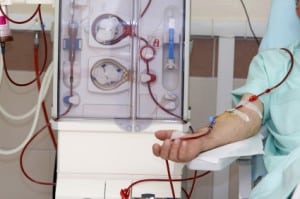
Pregnancy in dialysis patients is a rare but important event that challenges our knowledge and demands re-thinking many aspects of our practice, including vascular access” Piccoli et al (2018). Abstract: Pregnancy in dialysis patients is a rare but important event that challenges our knowledge and demands re-thinking many aspects of our practice, including vascular access. […]
History of the Swan Ganz pulmonary artery catheter

This article describes their lives and careers, the state of intensive care before and after their catheter was introduced, and the natural life cycle the PA catheter faced as new, less invasive technology arrived to replace it” Thakkar and Desai (2018). Abstract: Jeremy Swan and William Ganz developed their eponymous pulmonary artery (PA) catheter in […]
Patient experience of photopheresis using a peripherally inserted central catheter

“The use of peripherally inserted central venous catheters (PICCs) offers an alternative route of vascular access for this cohort of patients. Here we present a case report of a patient successfully treated with ECP following the insertion of a PICC line” Rushton et al (2018).
Peripheral portacath provides safe and convenient vascular access

This study shows that the use of peripheral PaC is safe. The feedback from patients and nursing staff supports the use of the peripheral PaC. We are exploring additional patient groups that might benefit from this device” Herd et al (2018). Abstract: INTRODUCTION: Adolescent patients with chronic conditions rely on permanent venous access for safe […]
Antisepsis in the handling of vascular access connections

Needleless connectors provide easy access points to the vascular system for the administration of fluids, avoiding the risk of accidental punctures and increasing safety in vascular access manipulation. Non-aseptic manipulation can favor contamination” Fernández Moreno and Píriz Marabaján (2018). Abstract: Needleless connectors provide easy access points to the vascular system for the administration of fluids, […]
Central line related complications in pediatric oncology patients

Central venous access device (CVAD)-related complications are associated with high morbidity rates. This study was performed to underline the importance of CVAD-complication prevention and treatment” van den Bosch, et al (2018). Abstract: BACKGROUND: Central venous access device (CVAD)-related complications are associated with high morbidity rates. This study was performed to underline the importance of CVAD-complication […]
Influence of vascular access devices upon therapeutic plasma exchange

The use of peripheral venous access is possible in most of TPE, for emergency and during maintenance therapy. Dialysis cannulae are good compromise between classic IV catheters and central venous catheters, as it allows high flow rates, are easy to insert and associated with few complications” Ritzenthaler et al (2018). Abstract: BACKGROUND: An efficient vascular […]
Clinical practice guidelines for the prevention of vascular access catheter associated infections

This includes details about the use of topical antimicrobial ointments and dressings, intranasal ointment application, prophylactic use of antibiotic and non-antibiotic catheter lock solutions, and catheter hub devices for the prevention of catheter blood stream infections” Golestaneh et al (2018). Abstract: Tunneled central venous catheters used for the provision of hemodialysis are associated with excess […]
Association of workload on occupational needlestick injuries

To determine the prevalence and type of occupational injuries in nurses and their associations with workload, working shift, and nurses’ individual and organisational factors” Bagheri Hosseinabadi et al (2018). Abstract: AIMS AND OBJECTIVES: To determine the prevalence and type of occupational injuries in nurses and their associations with workload, working shift, and nurses’ individual and […]
Pythagoras and ultrasound-guided vessel puncture

Reminding about the properties of the isosceles right triangle might be of interest to teach young fellows a secure step by step technique for vessel catheterization” Piton et al (2018). Extract: “Vascular access is routinely performed by critical care physicians and the use of ultrasonography is recommended [1]. However, complications during vessel puncture are not […]
Impact of urgent start intermittent peritoneal dialysis on CLABSI rates
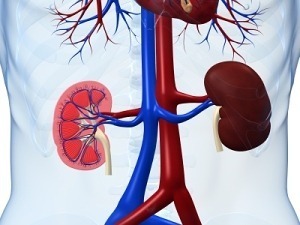
Noncuffed catheters (NCC) are often used for incident hemodialysis (HD) patients without a functional vascular access. This, unfortunately results in frequent catheter-related complications such as infection, malfunction, vessel stenosis, and obstruction, leading to loss of permanent central venous access with superior vena cava obstruction” Shanmuganathan et al (2018). Abstract: BACKGROUND: Noncuffed catheters (NCC) are often […]
Effects of perioperative fluid management on postoperative outcomes in liver transplantation

We will conduct a systematic review aimed at evaluating the effects of restrictive perioperative fluid management strategies compared to liberal ones on clinically significant postoperative outcomes” Carrier et al (2018). Abstract: BACKGROUND: Liver transplant recipients suffer many complications, but few intraoperative interventions supported by high-quality evidence have been found effective to reduce their incidence or […]
Ultrasound use in neonatal peripheral intravenous extravasation injuries
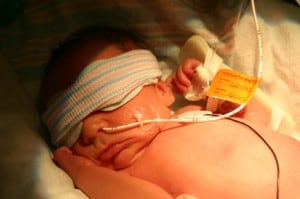
The primary aim of this study was to examine and describe peripheral intravenous extravasation (PIVE) injuries using point-of-care ultrasound (POC-US). A secondary aim was to define skin tissue changes before and after hyaluronidase application using POC-US” Boyar et al (2018). Abstract: PURPOSE: The primary aim of this study was to examine and describe peripheral intravenous […]
Home parenteral support in patients with incurable cancer

It is uncertain if home parenteral support (HPS) is of advantage in patients with incurable cancer and intestinal failure, functional obstruction or severe malabsorption” Obling et al (2018). Abstract: PURPOSE: It is uncertain if home parenteral support (HPS) is of advantage in patients with incurable cancer and intestinal failure, functional obstruction or severe malabsorption. From […]
Impact of health insurance in the early stages of hemodialysis and vascular access

Patients without Medicare who develop ESKD in the United States become Medicare eligible by their fourth dialysis month. Patients without insurance may experience delays in obtaining arteriovenous fistulas or grafts before obtaining Medicare coverage” Lin et al (2018)”. Abstract: BACKGROUND AND OBJECTIVES: Patients without Medicare who develop ESKD in the United States become Medicare eligible […]
Guidewire problems during central venous catheter placement

CVC placement was confirmed via plain radiography of the chest Even a flexible guidewire can penetrate the IJV at posterior wall if a puncture needle tip is positioned near the posterior wall Longitudinal ultrasonographic imaging of guidewires can help physicians avoid misplacing dilators” Yamasaki et al (2017). Abstract: A 58-year-old man (height, 160.5 cm; weight […]
Case of living donor liver transplantation complicated by central catheter thrombosis

We encountered a case of thrombosis developing on the sixth day after surgery, in a patient with a PreSep Central Venous Oximetry Catheter™ placed in the internal jugular vein” Shiba et al (2016). Abstract: Central venous catheter-related infection and thrombosis frequently occur, leading to serious complications in some cases. We encountered a case of thrombosis […]
Implantable ports for prophylactic RBC exchanges in sickle cell patients
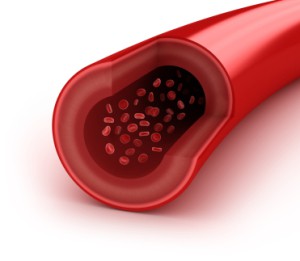
Red blood cell exchange (RCE) procedures are commonly used for stroke prevention in sickle cell disease (SCD) patients. We compared two different dual lumen ports used for RCE because differences between the port and catheter design may lead to functional variance” Lawicki et al (2018). Abstract: INTRODUCTION: Red blood cell exchange (RCE) procedures are commonly […]
Point of care ultrasound in localizing central venous line tip position

The primary objective was to study agreement between X-rays and point of care ultrasound (POC-US) in determining central venous line (CVL) tip position” Zaghloul et al (2018). Abstract: The primary objective was to study agreement between X-rays and point of care ultrasound (POC-US) in determining central venous line (CVL) tip position. The secondary objective was […]
Central line maintenance bundle for dislodgement and infection prevention

Although research has shown frequent, scheduled dressing changes using the chlorhexidine patch decreases infection rates, the risk of dislodgement and skin breakdown for NICU infants outweighs the potential benefit of decreased infection” Short (2018). Abstract: BACKGROUND: Infants in the newborn intensive care unit (NICU) often receive medications or nutritional support for extended periods. Due to […]
What is the impact of home parenteral nutrition on hospital re-admission

Unplanned re-admissions for patients with IF accounted for a third of all hospitalisations in those on HPN and the majority were due to CRBSI” Burden et al (2018). Abstract: INTRODUCTION: Home parenteral nutrition (HPN) provides fluid and nutrition essential for the survival of patients with type 3 intestinal failure (IF). However, it is associated with […]
An example of hospital-wide surveillance of central line-associated bloodstream infections

CLABSIs are less common in general wards than in ICUs, but they are more often associated with long-term indwelling catheters. Therefore, interventions to prevent CLABSIs should be tailored according to the type of ward and type of catheter” Seo et al (2018). Abstract: BACKGROUND: Surveillance and interventions of central line-associated bloodstream infections (CLABSIs) had mainly […]

